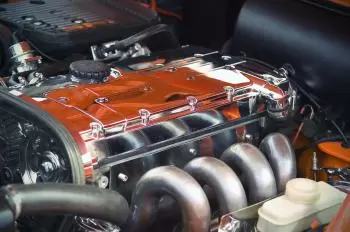
Since the first developments of the alternative engine with the steam engine, its use has been growing exponentially. The appearance of internal combustion thermal engines has helped to accelerate its popularity.
However, the characteristics of the alternative engine entails a series of advantages and disadvantages that we intend to study.
From the first alternative engines such as the steam engine or the stirling engine to the current thermal engines the characteristics of this engine have varied a lot. Although the operating principle for the generation of mechanical energy is maintained, the source of energy has varied. Due to the great popularity of thermal engines (Otto engine and diesel engine) we will focus primarily on analyzing the advantages and disadvantages of this type of reciprocating engine.
Advantages of the alternative motor
The main advantages of the alternative engines, which have motivated their great development are mainly related to:
- The type of fuel used.
- Engine performance.
- The power field.
An important advantage of the alternative engine is the use of liquid fuels of great calorific value. This type of fuel provides high power and extends the range of the thermal engine. These fuels are mainly gasoline in the Otto engine and diesel or diesel in diesel engines.
They can also use gaseous fuels like molecular hydrogen, methane or propane or even steam in the case of steam engines.
Another advantage of the alternative engine is related to performance. The performances of these engines are considered acceptable, although they rarely exceed 50% (it must be taken into account that 100% yields are impossible, see Carnot cycle).
Another remarkable advantage is that the alternative engines have a wide range of powers, from 0.1 kW to more than 30 MW, which allows their use in the feeding of small manual machines, as well as large marine engines.
Disadvantages of the reciprocating engine
However, the alternative engines are not exempt from inconveniences related to the fuel used, the environmental and acoustic contamination:
- Fuel used. These engines are mostly fueled (although there are alternative developments) for gasoline or diesel, two derivatives of petroleum which is a non-renewable fossil fuel. In addition, this type of fuel suffers considerable fluctuations in the price.
- Contamination. The combustion gases of these engines are the main responsible for pollution in cities (along with fossil fuel heating), which leads to acute episodes of local pollution such as photochemical smog and contributes significantly to global phenomena such as the greenhouse effect and the consequent climate change.
- Loudness, Otto motors are subjected to violent vibrations that cause situations of high loudness, higher than 120dB, therefore, they must have installed silencers that reduce performance.
In some applications, the alternative engine has been successfully replaced by a turbine, and electric cars have already been commercialized, although with limited autonomy due to the weight of the batteries, and solar. The main handicap of these last two systems is that the performance of the vehicle is significantly lower than that provided by an alternative internal combustion engine, so its demand is very low.